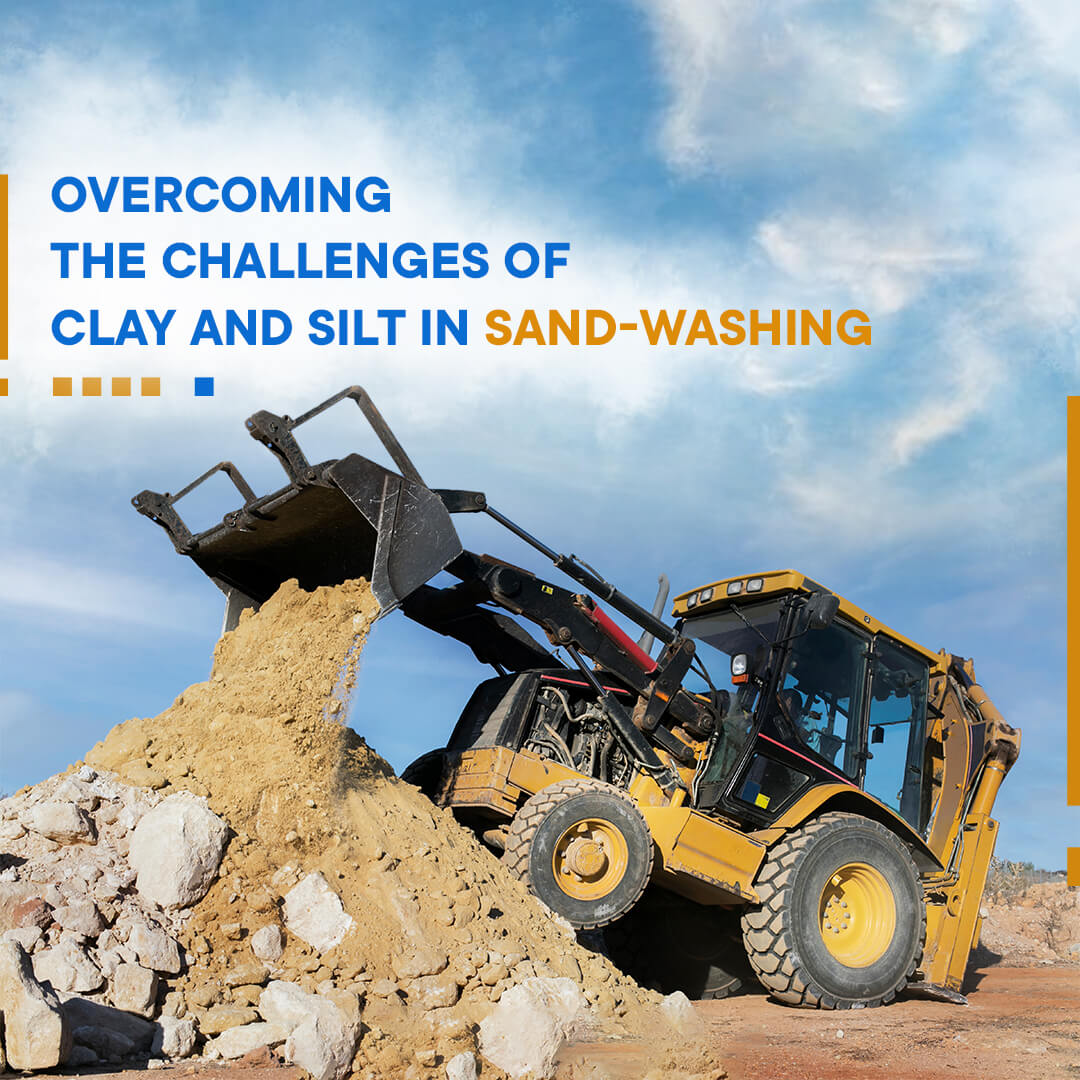Overcoming the Challenges of Clay and Silt in Sand-Washing
Blogs

Sand-washing plays a key role in the production of clean and high-quality building materials. However, one of the most common challenges in sand-washing is the presence of clay and silt. These fine particles can degrade the quality of the sand and affect its usability and performance in construction applications. In this blog, Puzzolana.com looks at the challenges of sand-washing caused by clay and silt, and explores effective techniques to solve them, ensuring the production of clean, high-quality sand for construction projects.
Understanding the effects of clay and silt: Clay and silt are fine particles that can stick to the surface of sand grains, causing various problems. They can reduce the permeability of sand, resulting in poor compaction and reduced stability in construction projects. In addition, clay and silt can affect the workability and curing of concrete, which weakens the strength and durability of structures.
Understanding the harmful effects of these particles is essential to implementing effective mitigation strategies.
Pre-washing and screening
Pre-washing and screening are important steps in the processing of clay and silt in sand washing. Prewashing separates larger particles, including clay and silt, before they reach the washing process. Sieving helps remove oversized particles and facilitates better separation of sand and fines. Effective pre-washing and screening of the feed material can significantly reduce the amount of sand and silt that reaches the sand-washing stage.
Attrition scrubbing: Attrition scrubbing is a technique used to remove clay and silt from the sand. It involves mixing sand particles in the presence of water and chemicals, causing the particles to collide and crumble. This process helps remove fine particles from the surface of the sand and promotes their separation. Attrition scrubbing is particularly effective in removing stubborn clay coatings from sand grains and increasing the cleanliness of the final product.
Flocculation and sedimentation: Flocculation is a chemical process that helps settle fine particles suspended in water. By adding a flocculant to the sand-washing process, clay and silt particles can be brought together, resulting in larger, heavier flakes that settle more easily. This technology improves the efficiency of solid-liquid separation, allowing cleaner sand. Optimisation of water use: Water plays a vital role in washing sand, including removing clay and silt. However, excessive water use can hinder the efficiency of the process by promoting the dispersion of fine particles. Optimising water use through controlled flow rates and proper adjustments helps maintain the ideal balance for effective particle separation.
Screening and dewatering techniques
Backwashing, using effective screening and dewatering techniques, helps remove residual mud and silt. Typically, vibrating screens and dewatering screens are used to separate and remove excess moisture from the washed sand, ensuring a clean and dry final product.
Conclusion
In sand-washing, overcoming the challenges caused by clay and silt is crucial to ensure the production of high-quality construction materials. By using techniques such as pre-washing, screening, attrition scrubbing, dewatering and optimising water use, the impact of clay and silt can be effectively reduced. These approaches result in cleaner sand with better properties, improving its usability and performance in construction applications. By understanding the challenges associated with sand and silt in sand washing and implementing appropriate measures, construction professionals can ensure the delivery of high-quality materials that meet the demanding standards of modern construction projects.
View our expansive machinery
With Puzzolana, you have the chance to work with the brightest professionals in the field and be a part of our expanding global footprint. We are looking for motivated professionals to join our team.